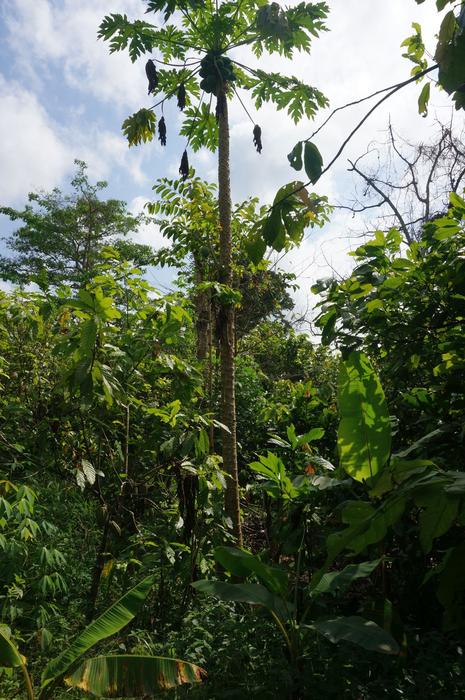Deep Sky unveils plans for one of the world’s biggest direct air carbon capture facilities in Manitoba – The Globe and Mail

Report on Deep Sky Corp.’s Direct Air Capture Facility in Manitoba
Executive Summary
This report details the plans of carbon-removal firm Deep Sky Corp. to construct a $500-million direct-air-capture (DAC) facility in southwestern Manitoba. The project is a significant initiative in the global effort to mitigate climate change, directly aligning with several United Nations Sustainable Development Goals (SDGs), most notably SDG 13 (Climate Action). The facility aims to remove 500,000 tonnes of atmospheric CO2 annually, leveraging regional advantages to create a scalable model for green technology and sustainable economic development.
Project Scope and Contribution to SDG 13 (Climate Action)
The primary objective of the Manitoba facility is to directly counteract the atmospheric buildup of greenhouse gases, a core target of SDG 13. By capturing and permanently storing CO2, the project provides a tangible technological solution to combat climate change and its impacts.
Phased Implementation Plan
- Initial Phase: A $200-million investment to construct a facility capable of removing 30,000 tonnes of CO2 per year. Construction is scheduled to commence in 2026.
- Full-Scale Operation: A subsequent expansion to reach a total project value of $500 million, with an annual carbon removal capacity of 500,000 tonnes.
Technology and Innovation
The project builds upon research and development conducted at Deep Sky’s Alpha facility in Innisfail, Alberta. This demonstration plant tests various DAC technologies from multiple vendors to assess:
- Energy consumption and overall efficiency
- Durability and operational resilience
- Scalability for large-scale deployment
Alignment with Key Sustainable Development Goals
Beyond its primary climate objective, the project integrates multiple SDGs, creating a comprehensive model for sustainable development.
SDG 7 (Affordable and Clean Energy) & SDG 9 (Industry, Innovation, and Infrastructure)
The facility’s strategic location in Manitoba was chosen to leverage the province’s abundant carbon-free hydroelectric power. This commitment to clean energy (SDG 7) is fundamental to the project’s sustainability. The development represents a major investment in resilient, innovative green infrastructure (SDG 9), positioning Canada as a leader in the emerging carbon-removal industry.
SDG 8 (Decent Work and Economic Growth) & SDG 10 (Reduced Inequalities)
The project is expected to stimulate significant economic growth and create skilled jobs in the region, contributing to SDG 8. Furthermore, Deep Sky has established a partnership with the Dakota Nations of Manitoba. This collaboration includes exploring investment and equity opportunities, ensuring that Indigenous communities are active participants and beneficiaries in the region’s sustainable economic development, thereby addressing SDG 10.
SDG 17 (Partnerships for the Goals)
The project exemplifies a multi-stakeholder partnership essential for achieving the SDGs. It involves collaboration between:
- The Private Sector: Deep Sky Corp. leading the investment and execution.
- Indigenous Peoples: The Dakota Grand Council, which has expressed support for the project’s alignment with its vision for a sustainable future.
- Government: A favorable provincial regulatory framework, including 2024 legislation permitting CO2 storage.
- International Partners: U.S.-based technology companies, such as CarbonCapture Inc., are relocating operations to Canada, highlighting cross-border collaboration in response to shifting global climate policy.
Conclusion: Strategic Importance and Future Outlook
Deep Sky’s Manitoba DAC facility is a landmark project for Canada’s climate strategy and its commitment to the Sustainable Development Goals. As international policies on green technology evolve, Canada’s supportive environment for decarbonization initiatives becomes a critical strategic advantage. This project not only advances climate action (SDG 13) but also fosters innovation (SDG 9), promotes clean energy (SDG 7), drives inclusive economic growth (SDG 8 & 10), and is built on a foundation of strong partnerships (SDG 17).
Analysis of Sustainable Development Goals (SDGs) in the Article
1. Which SDGs are addressed or connected to the issues highlighted in the article?
-
SDG 7: Affordable and Clean Energy
The article mentions that the project will be located in Manitoba due to its “carbon-free hydro power.” This directly connects the initiative to the use of clean and renewable energy sources to power industrial processes, a key component of SDG 7.
-
SDG 9: Industry, Innovation, and Infrastructure
The core of the article is about building a new, large-scale industrial facility ($500-million direct-air-capture plant). This represents a significant investment in sustainable infrastructure. The project is based on innovative “next-generation carbon-removal technology” and aims to upgrade industrial capacity to address climate change, aligning perfectly with SDG 9.
-
SDG 13: Climate Action
This is the most central SDG addressed. The entire purpose of the Deep Sky project is to “counteract the buildup of CO2 in the atmosphere” and “remove climate-warming gas from the air.” This is a direct and tangible measure to mitigate climate change, which is the primary goal of SDG 13.
-
SDG 17: Partnerships for the Goals
The article highlights the collaborative nature of the project. Deep Sky is engaging with “municipal and Indigenous leaders” and has “garnered the support of the Dakota Grand Council by working with the Dakota Nations of Manitoba.” This demonstrates a multi-stakeholder partnership (public-private-Indigenous) to achieve sustainable development goals.
2. What specific targets under those SDGs can be identified based on the article’s content?
-
Target 7.2: Increase the share of renewable energy
The project’s decision to locate in Manitoba specifically to use the province’s “carbon-free hydro power” directly supports the goal of increasing the share of renewable energy in the energy mix for industrial activities.
-
Target 9.4: Upgrade infrastructure and retrofit industries for sustainability
The construction of a direct-air-capture plant is a clear example of building new infrastructure and adopting “clean and environmentally sound technologies” to make industries more sustainable. The project’s goal is to remove CO2, directly contributing to this target.
-
Target 13.3: Improve education, awareness-raising and human and institutional capacity on climate change mitigation
The project, being one of the world’s largest of its kind, builds significant institutional capacity for climate change mitigation in Canada. The development of a “favourable regulatory regime” and legislation for CO2 storage in Manitoba, as mentioned in the article, is a direct outcome of building this capacity.
-
Target 17.17: Encourage and promote effective public, public-private and civil society partnerships
The article explicitly states that Deep Sky is in talks with “municipal and Indigenous leaders” and has “signed a declaration to explore investment and partnership opportunities” with the Dakota Nations. This is a direct example of a public-private-civil society partnership aimed at sustainable development.
3. Are there any indicators mentioned or implied in the article that can be used to measure progress towards the identified targets?
-
Indicator for Target 9.4 and 13.3: Amount of CO2 removed
The article provides a specific, measurable indicator of the project’s impact. It states the facility will “absorb 500,000 tonnes of carbon dioxide annually.” This figure can be used to track progress in climate change mitigation and the adoption of clean technology.
-
Indicator for Target 7.2: Reliance on renewable energy
The article implies an indicator by stating the project will use “carbon-free hydro power.” Progress can be measured by the percentage of the facility’s total energy consumption that is sourced from renewable hydro power.
-
Indicator for Target 17.17: Formal partnerships established
The mention of a “signed a declaration to explore investment and partnership opportunities” with the Dakota Grand Council serves as an indicator of a formal partnership being established between the private sector and Indigenous communities to achieve project goals.
4. Summary Table of SDGs, Targets, and Indicators
| SDGs | Targets | Indicators |
|---|---|---|
| SDG 7: Affordable and Clean Energy | 7.2: By 2030, increase substantially the share of renewable energy in the global energy mix. | Use of “carbon-free hydro power” to operate the facility. |
| SDG 9: Industry, Innovation, and Infrastructure | 9.4: By 2030, upgrade infrastructure and retrofit industries to make them sustainable… with greater adoption of clean and environmentally sound technologies. | The planned removal of 500,000 tonnes of CO2 annually through direct-air-capture technology. |
| SDG 13: Climate Action | 13.3: Improve… institutional capacity on climate change mitigation. | The volume of CO2 removed (“500,000 tonnes of carbon dioxide annually”) as a direct measure of mitigation action. |
| SDG 17: Partnerships for the Goals | 17.17: Encourage and promote effective public, public-private and civil society partnerships. | The signed declaration and ongoing collaboration with the Dakota Nations of Manitoba and municipal leaders. |
Source: theglobeandmail.com

What is Your Reaction?
 Like
0
Like
0
 Dislike
0
Dislike
0
 Love
0
Love
0
 Funny
0
Funny
0
 Angry
0
Angry
0
 Sad
0
Sad
0
 Wow
0
Wow
0



















































.jpg.webp?itok=0ZsAnae9#)
























